New wave of university programs puts Indigenous knowledge at its core
https://www.cbc.ca/news/canada/universities-indigenous-new-programs-1.6588120
https://www.cbc.ca/news/canada/universities-indigenous-new-programs-1.6588120
Making Things Our Own: The Indigenous Aesthetic in Digital Storytelling
This essay makes use of the characteristics of oral storytelling to define indigenous
perspectives on narrative and to provide a framework in which to interpret video and new media art created by Zacharias Kunuk, Nation to Nation’s Cyberpowwow project
and Paula Giese’s Native Ameri can Indian Resources.
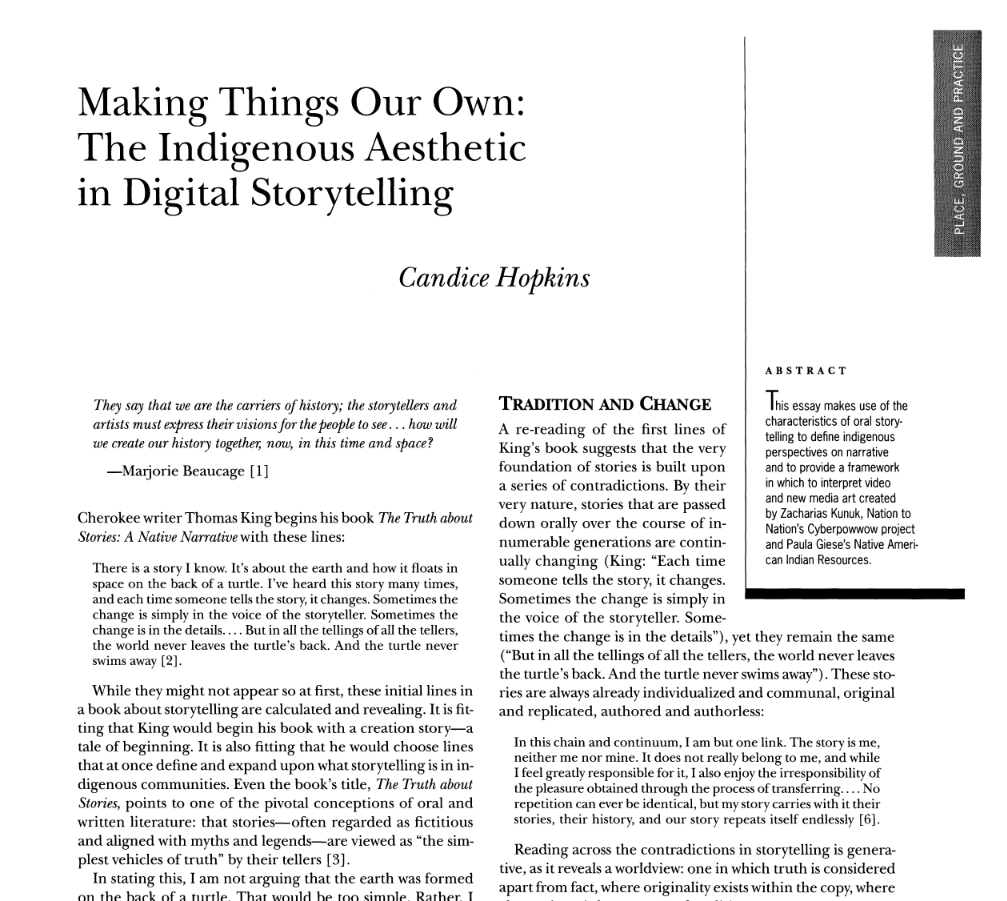
https://muse-jhu-edu.eu1.proxy.openathens.net/article/200347 (login via UBC)
Ohneganos is an Indigenous water research program led by McMaster University Professor, Dr. Dawn Martin Hill.
https://www.ohneganos.com/digital-stories
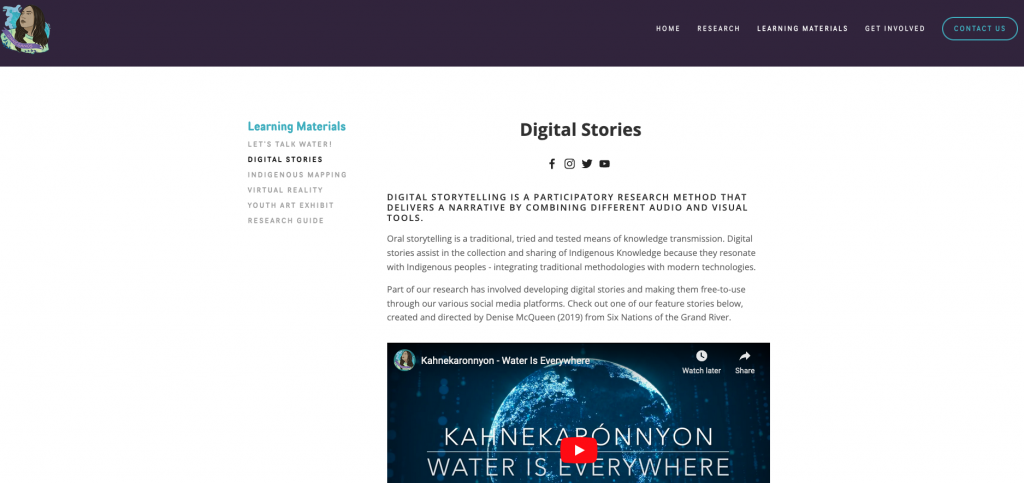
Traditional Storytelling in the Digital Classroom
2013 ETEC 521 assignment by Camille McFarlane focusing on traditional storytelling in the Digital Classroom

Sharing Indigenous Knowledge through inter-generational digital storytelling: Design of a workshop engaging Elders and youth
https://www.tandfonline.com/doi/pdf/10.1080/03601277.2021.1927484?needAccess=true

ETEC 521 Module 2 post 3
https://niemanreports.org/articles/telling-indigenous-stories/
Story about how mainstream media cover Indigenous stories — interesting parallels to Nanook of the North.
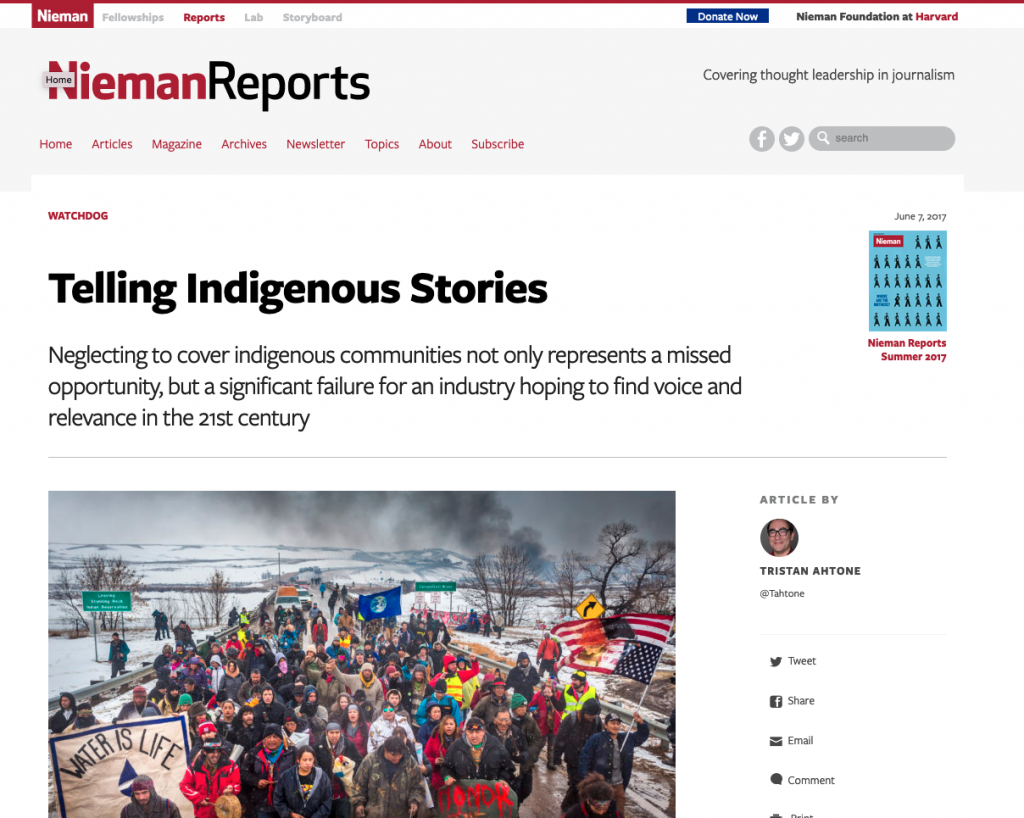
Chapter 11 Storytelling, Culture, and Indigenous Methodology
https://brill.com/view/book/9789004465916/BP000023.xml
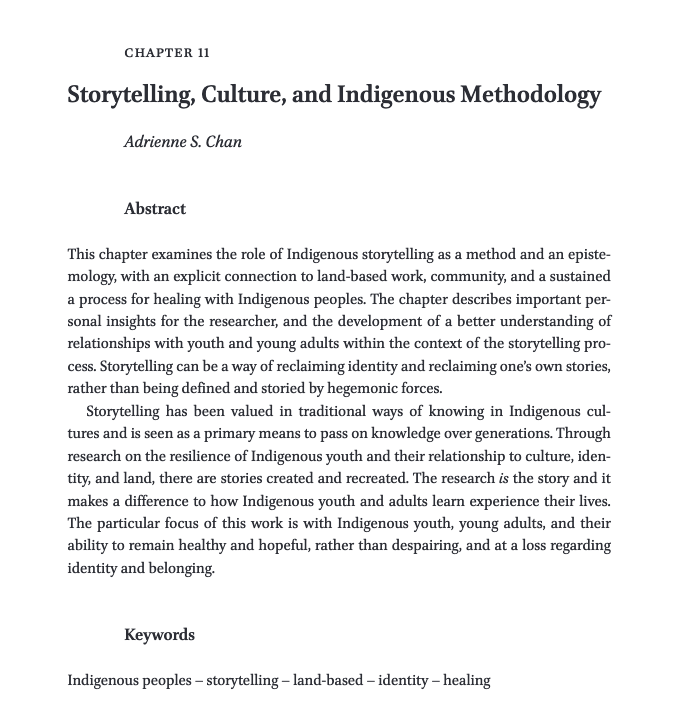
Storytelling in a digital age: digital storytelling as an emerging narrative method for preserving and promoting Indigenous oral wisdom
The IM4 Media Lab Podcast amplifies immersive Indigenous storytelling

A challenge to encourage people to listen to, learn from, and share the stories of Survivors of Indian Residential Schools.
https://next150.indianhorse.ca/challenges/survivor-stories
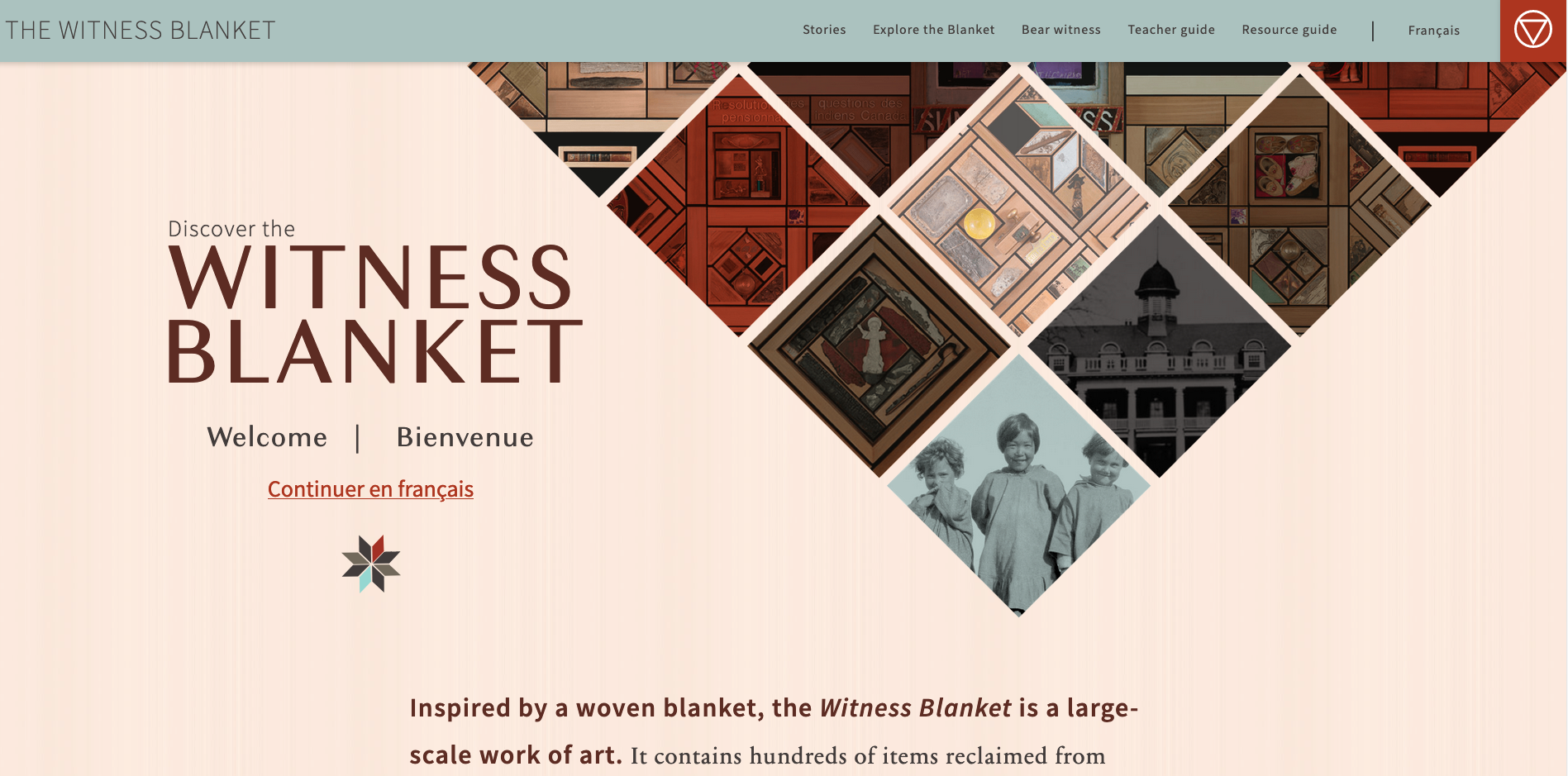
Interactive site showcases residential school stories
Stories of residential school experiences
Additional resources:
https://www.lostinthemovies.com/2008/08/nanook-of-north.html
Website breaks down some of the controversary surrounding Nanook of the North
“Nanook and other Inuit hunters use guns, not spears, to hunt, Nanook’s family isn’t actually his family (they were selected by Flaherty for their roles) and to top it all off Nanook isn’t actually Nanook. His real name was Allakariallak – not quite as catchy.”

Longer “cleaned-up” version of Nanook of the North (1922) posted to Andre Bourbeau in 2020
https://youtu.be/3WFT65hVfU8
– another version posted by RetroTV
Interesting comment included at the YouTube link:
For those interested in the BTS of this film: Be aware that this is not the documented reality of Inuit life at that time and is closer to what we would now consider a fictional retelling. Flaherty, in collaboration with Allakariallak (Nanook’s actual name), staged every scene of his film to show how Inuit used to live. The family isn’t actually one, the clothes were provided by French fur company Revillon, even the igloo is fake (only half of it was built to allow for enough light to come in & to be able to film “inside”). This staging actually makes sense when you consider how heavy & cumbersome filming was at the time – Setting the camera alone would’ve taken such a long time that it would’ve been impossible to follow these people around like in a “2 days in the life of…” modern vlog style. However, Flaherty showed his film to the general public under the guise of “real images” which then spurred controversy. If you consider this documentary as a collaborative project or a reconstructed narrative that says more about film-making in the 20th c. and about the nostalgia Inuit had for a style of life that was quickly disappearing this is a very interesting piece of film-making history. But one cannot forget to replace this in its colonial context which coincidentally was very much omitted as part of the “romanticizing of the Other” trend of the time. note that Eskimo is a Western term that is considered very offensive & the use of Inuit is preferred as this is how this ethnic group referred to themselves as. Inuk = 1 person, Inuit = 3 or more.
Discussion about the influence of Flaherty’s documentary-style film
Frances Flaherty interviewed by Robert Gardner
https://collider.com/nanook-of-the-north-100-anniversary-documentary-robert-flaherty/
A discussion about the impact of Nanook of the North on cinema and documentaries.

YouTube Description of the documentary “Understanding Aboriginal Identity.
Understanding Aboriginal Identity explores the complex issue of self-identification for Aboriginal people. Today, Aboriginal identity remains inextricably linked with past government legislation and the continued stereotyping of Aboriginal people in the media and Canadian history. From a Metis farm in rural Alberta to the offices of Canada’s leading scholars, Understanding Aboriginal Identity examines the factors that shape who we are. To order a copy of this video, contact us at bearpawlegal@ncsa.ca.

Smith, Laurel Catherine, “MEDIATING INDIGENOUS IDENTITY: VIDEO, ADVOCACY, AND KNOWLEDGE IN OAXACA, MEXICO” (2005). University of Kentucky Doctoral Dissertations. 359.
https://uknowledge.uky.edu/gradschool_diss/359
In her PhD dissertation, Dr. Smith outlines how small-scale video and media content can serve as a counter-point to mass media descriptions and coverage of Indigenous Peoples. The article focuses on Mexican Indigenous identity, but includes several references to similar initiatives in Canada.
This week, the University of Waterloo participated in a Commitment Ceremony to affirm its commitment towards decolonization, Indigenization and reconciliation. During the ceremony, Elder Myeengun Henry shared his thoughts on the use of technology.
Some other interesting resources:
Salazar, J. F. (2009). Self-determination in practice: The critical making of indigenous media. Development in Practice, 19(4-5), 504-513. https://doi.org/10.1080/09614520902866397
Grogan, J., Hollinsworth, D., & Carter, J. (2021). Using videoed stories to convey indigenous ‘Voices’ in indigenous studies. The Australian Journal of Indigenous Education, 50(1), 38-46. https://doi.org/10.1017/jie.2019.15
Zoettl, P. A. (2012). Participatory video as a means of reflection and self-reflection about the image and identity of re-emerging indigenous groups in north-eastern brazil. Anthropology in Action (London, England : 1994), 19(2), 17-26. https://doi.org/10.3167/aia.2012.190203